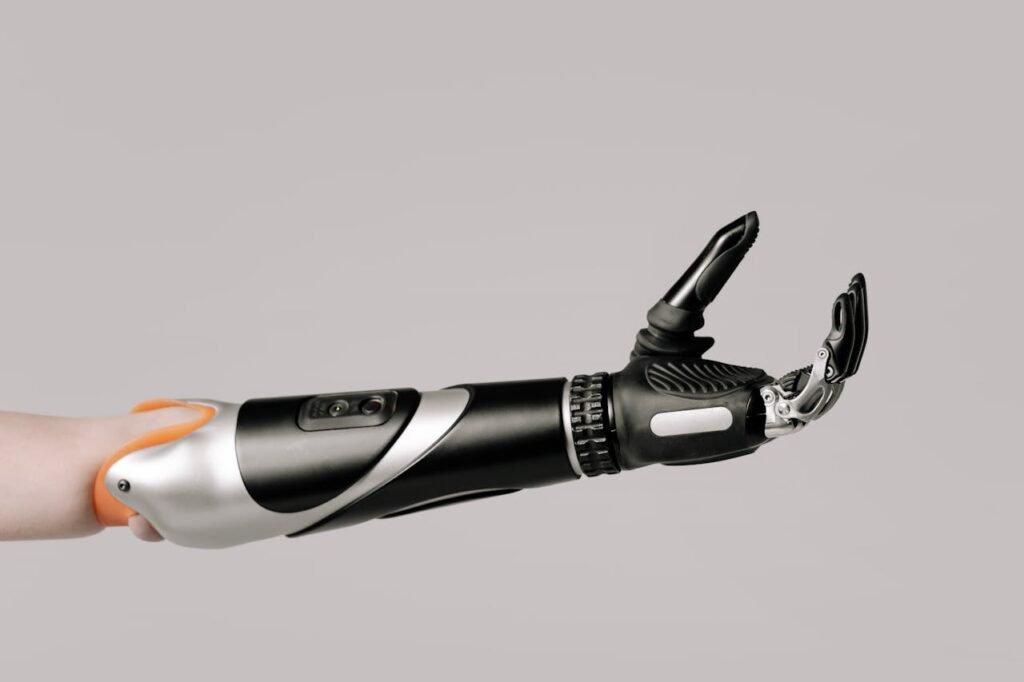The human hand is an incredible tool. Even a single finger can do amazing things—hold, touch, write, lift, and feel. But when part of a finger is lost, life changes in a big way. Movements become harder. Everyday tasks need more effort. And the hand feels incomplete.
Understanding how partial fingers move—what muscles, joints, and forces are involved—is the first step in rebuilding that movement. It’s also the key to designing better prosthetics that feel natural and work well.
In this article, we’ll explore the biomechanics behind partial finger movements. We’ll break it down in a simple, clear way, so you can understand how the body works—and how modern technology like our Grippy Mech Finger helps restore that movement.
Understanding the Anatomy of the Finger
The Finger Is Not Just Bone and Skin
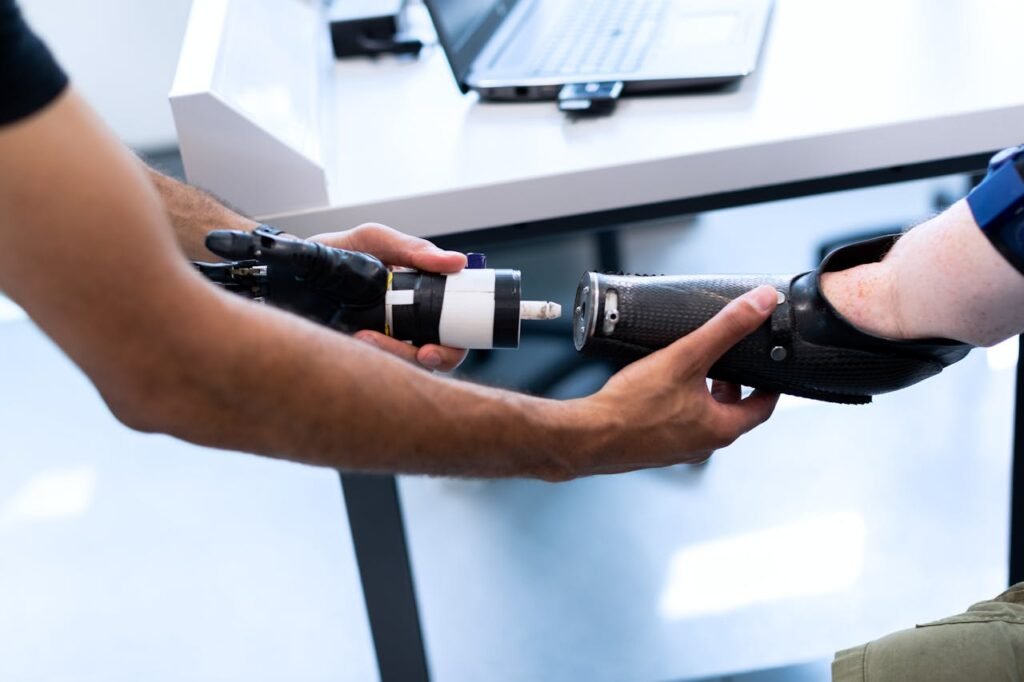
To understand how a partial finger moves, we first need to look at how a full finger works. Each finger is a small but complex system made of bones, joints, muscles, tendons, ligaments, nerves, and skin.
These parts don’t just sit there. They work together like a machine. When one part moves, others follow. If one part is missing, the whole system changes.
When someone loses a part of their finger—like the tip or the middle joint—many of these internal systems are affected. The muscles may still be present in the hand or forearm, but the way they control movement has to change.
Bones and Joints: The Building Blocks
Each finger has three bones called phalanges—except the thumb, which has two. These bones are connected by joints. The joints are where motion happens.
There’s the distal interphalangeal joint (DIP) at the tip, the proximal interphalangeal joint (PIP) in the middle, and the metacarpophalangeal joint (MCP) where the finger meets the hand.
When part of the finger is lost, one or more of these joints may also be gone. That limits how the rest of the finger can bend, flex, or grip. The fewer joints you have, the less range of motion you can achieve.
That’s why biomechanical solutions need to work with what’s left—and not try to force what’s missing.
Tendons: The Strings Behind the Motion
Think of tendons like ropes that pull the bones. They connect the muscles in your forearm to the bones in your fingers. When you flex or extend your hand, these tendons tighten or loosen to make the fingers move.
Even after a partial finger loss, many of these tendons remain in place. But they can’t do their job the same way if the bone or joint they used to pull is no longer there.
That’s where prosthetic fingers can help. By attaching to the remaining part of the finger and using mechanical systems, they can take that natural tendon pull and turn it into useful movement.
Understanding this balance between preserved tendons and missing structure is key to designing responsive prosthetics.
Muscles: The Powerhouse Hidden in the Forearm
Most of the strength in your fingers doesn’t come from the hand itself—it comes from the forearm. The flexor and extensor muscles send signals down through the tendons to make your fingers move.
Even after losing part of a finger, these muscles still work. They still generate force. They still respond to your brain’s signals.
That means the body still has the power to move. The challenge is directing that power to a shorter, altered structure. And that’s exactly what modern prosthetics try to do—take the force that’s still there, and guide it to a new tool.
Types of Partial Finger Loss and Their Impact
Losing the Tip: Small Loss, Big Effect
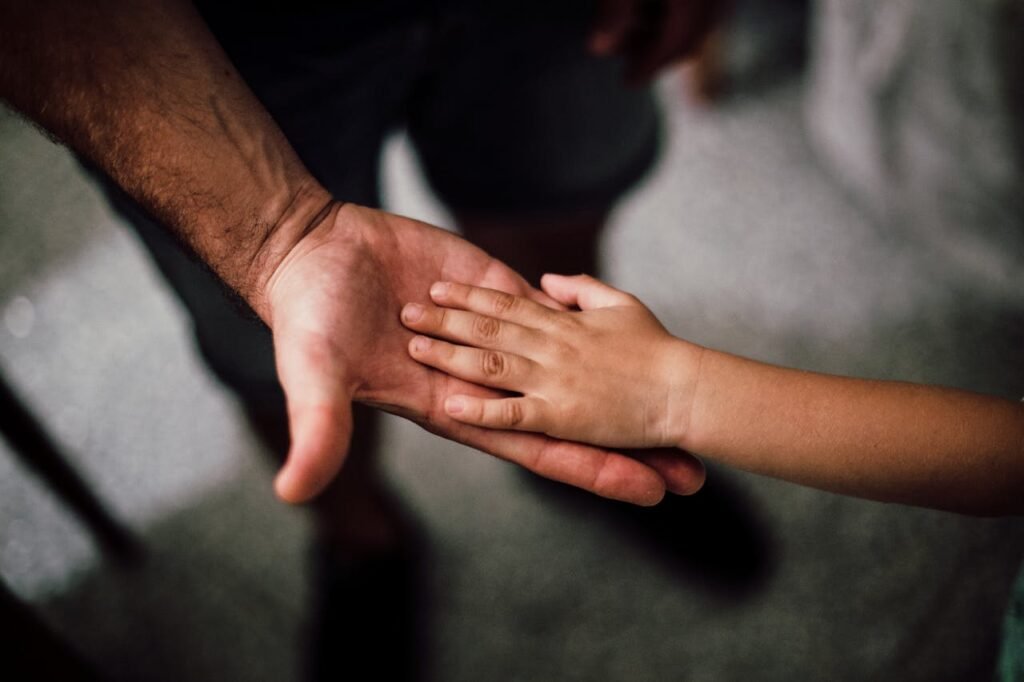
The tip of the finger may seem small, but it plays a big role in daily tasks. It’s full of nerve endings that help with touch. It also gives you fine control for writing, typing, or picking up tiny objects.
When the tip is lost, the finger becomes less sensitive. It’s harder to judge pressure or texture. This affects not just movement, but confidence too. You can’t always tell if you’re holding something right.
From a biomechanical view, the loss of the distal phalanx changes the balance of forces. The rest of the finger has to work harder to make up for the missing support.
Prosthetics designed for fingertip loss must restore length and grip surface without adding weight. They also need to give enough feedback so the user feels in control again.
Losing the Middle Joint: A Major Shift in Function
When the middle phalanx or the PIP joint is lost, the finger loses one of its most important bending points. This joint is responsible for much of the grip curve—the shape your hand makes when holding a bottle or cup.
Without it, the remaining finger may feel stiff or awkward. It can’t curl the same way. The hand may have to change its position to make up for the difference.
Biomechanically, this shifts the load to nearby fingers and alters the stress on the hand. Over time, this can cause fatigue or even joint pain.
A good prosthetic for this type of loss needs to restore that middle joint movement. It might use a mechanical hinge or a body-powered cable system that mimics how the natural joint used to work.
Losing from the Base: Rebuilding the Foundation
When most of the finger is lost—including the MCP joint at the base—the challenge is even bigger. The hand has to relearn how to balance, how to apply force, and how to interact with objects.
In this case, the remaining muscles and tendons may still be active. But the finger has no structure to work with. It’s like having a steering wheel with no car attached.
This is where mechanical prosthetics like the Grippy Mech Finger become life-changing. They can attach to the remaining hand structure and translate natural movement into mechanical motion—bringing back a sense of control and function.
It’s not about copying the lost finger perfectly. It’s about building a new one that works with the body’s natural rhythm.
Rebuilding Motion with Mechanical Prosthetics
What Makes a Good Finger Prosthetic?
A finger prosthetic isn’t just about looks. It’s about function. It should move with the body, not against it. It should feel intuitive, not mechanical. And most importantly, it should restore what was lost—not just physically, but emotionally too.
When designing a prosthetic for partial finger loss, we start by understanding what the user needs most. Is it strength? Speed? Precision? Sensation? Each user is different. Each hand tells its own story.
A good prosthetic should match the remaining anatomy. It should use the muscle power that’s still there. It should not ask the user to change how they move. Instead, it should adapt to their natural rhythm.
This is what separates a basic tool from a life-changing device.
How the Grippy Mech Finger Mimics Natural Motion
At Robobionics, we designed the Grippy Mech Finger to work with the body—not just attach to it.
It uses a body-powered system. That means when the user moves their wrist or hand, the prosthetic finger bends and grips. There are no batteries, no electronics. Just a clean, efficient mechanical motion.
But behind that simplicity is smart biomechanics. The Grippy Mech Finger is aligned to match the joint angles and movement paths of a real finger. When the user moves their hand, the prosthetic responds with a lifelike curve.
This gives a strong, stable grip without needing complex control systems. It feels natural because it moves naturally.
And that makes a big difference in daily life.
Using Force and Feedback the Right Way
One of the toughest parts of designing a finger prosthetic is managing force. You need enough grip strength to hold things securely, but not so much that you crush delicate objects.
The Grippy Mech Finger uses smart material choices and joint design to balance this. Its motion is smooth and responsive. As the user applies more force with their wrist, the finger tightens the grip gradually.
This gives the user more control without having to think about it. They can hold a cup of tea without spilling. They can grip a bag without crushing what’s inside.
This sense of control also restores confidence. Users don’t have to watch their hand constantly. They can trust it. That’s powerful.
Lightweight, But Strong
Weight is a major factor in how comfortable a prosthetic feels. A heavy device pulls on the hand and tires the user out. A light one feels like it’s not even there.
We designed the Grippy Mech Finger to be as light as possible without losing strength. It’s made with strong, durable materials that hold up in everyday use—even in tough work environments.
This means users can wear it all day—whether they’re cooking, working, commuting, or playing. They don’t have to take it off to rest. It becomes part of their life.
And because it’s non-electronic, there’s no worry about batteries, water damage, or power failures. It just works.
Matching the Prosthetic to the Remaining Finger
Adapting to Different Amputation Levels
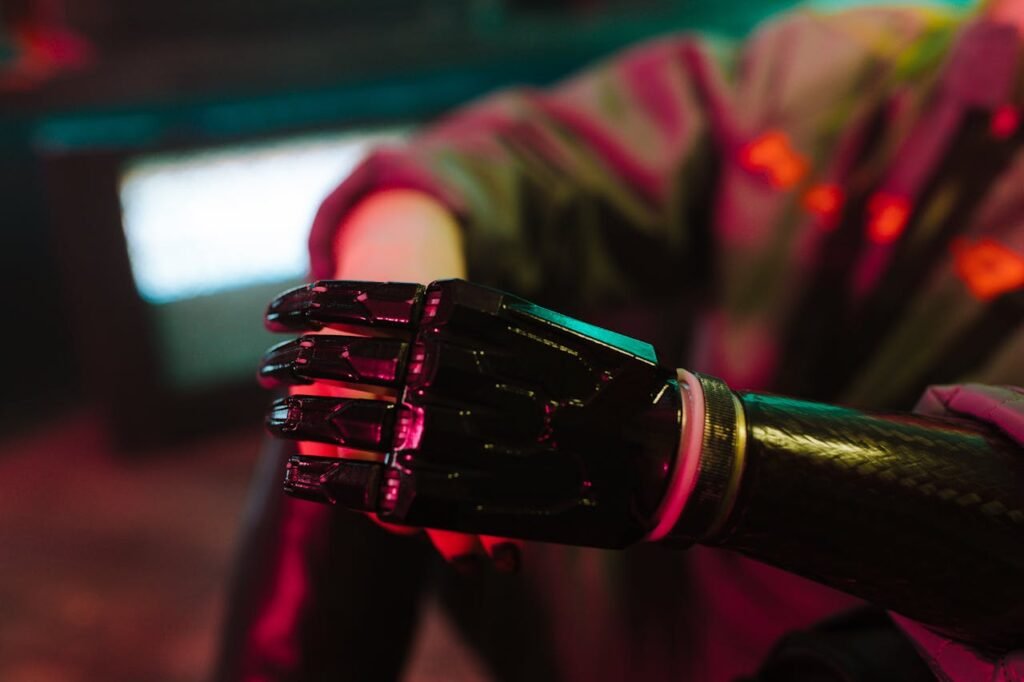
Not every finger loss is the same. Some users have lost just the tip. Others have lost the whole length. Some still have their knuckle. Others don’t.
That’s why a one-size-fits-all approach doesn’t work in prosthetics. Every prosthetic finger must be shaped and sized to match what remains.
At Robobionics, we start by examining the level of amputation—distal, middle, or proximal. We also look at what’s left: skin, bone, muscle, and joint function.
From there, we build a device that fits snugly, moves naturally, and connects firmly. We make sure the force from the user’s hand is transferred cleanly to the prosthetic. This keeps movement smooth and effort low.
We also ensure the design allows for easy wear and removal. Comfort is not a luxury. It’s a necessity.
Customizing the Grip and Feel
No two grips are the same. Some users need a wide grip to hold tools. Others want a fine grip for writing or typing. Some need something in between.
The Grippy Mech Finger can be customized in shape and motion range to match different tasks. For example, we can change the curve of the grip, the tension of the spring, or the texture of the finger tip.
We also make sure the contact surface has good friction. That means the finger can hold slippery items like pens or bottles without dropping them.
This kind of detailed customization is what turns a basic prosthetic into a personal one.
Adapting to a New Finger: The Body’s Amazing Ability
Neuroplasticity: How the Brain Learns Again
When a finger is lost, the brain doesn’t forget it right away. The nerves and brain cells that controlled the finger stay active, often for years. This is why many people feel phantom sensations—like itching, movement, or even pain in the missing part.
But this connection can be used in a powerful way.
The brain has an incredible ability called neuroplasticity. This means it can rewire itself to adapt to change. When someone starts using a prosthetic finger—especially one that responds to movement—the brain begins to treat it like a real finger.
This doesn’t happen overnight. But with regular use, the brain starts sending signals to the prosthetic just like it used to send signals to the biological finger. And if the prosthetic provides feedback (like movement or resistance), the brain builds new pathways to understand that too.
This is why users often say, “It feels like it’s part of me now.” Their brain has accepted the new tool—and made it part of their body image.
Learning Curve: From Awkward to Automatic
At first, using a prosthetic—especially one that works with wrist or arm movement—can feel strange. Movements that used to be automatic now require effort and thought. It’s a bit like learning to write with your non-dominant hand.
The body has to learn the right pressure, the right angle, and the right timing. This takes practice.
But here’s the good news: it gets easier quickly. Within a few weeks, most users report that they stop thinking about the movements. Their muscle memory starts kicking in. Their brain connects the dots. What was once awkward becomes automatic.
That’s the beauty of biomechanics and brain learning working together.
The prosthetic doesn’t just replace the missing finger—it helps train the brain to take control again.
The Role of Visual Feedback
One of the key supports during this learning phase is vision.
When users first begin training with a partial finger prosthetic, they rely heavily on their eyes. They watch the hand closely. They make corrections in real time based on what they see.
This is a normal part of adaptation. Visual feedback helps the brain understand what’s happening. It connects action with result.
Over time, as the user becomes more confident, they rely less on their eyes and more on feel and rhythm. This shift is a sign of successful adaptation—and it brings back natural movement.
Emotional Impact of Adaptation
Adapting to a prosthetic finger is not just a physical process. It’s deeply emotional.
For many users, finger loss is not just about pain—it’s about identity. The hand is a very personal part of who we are. It shapes how we connect, communicate, and create.
So, when a user finds that their prosthetic can move, grip, and help them do what they love again—it’s not just a technical success. It’s a moment of healing.
At Robobionics, we hear stories of users holding a cup again, playing the tabla, braiding their daughter’s hair, or going back to work after months of struggle. These aren’t just milestones. They’re victories.
And every one of them begins with understanding biomechanics and building the right support for the body and mind to adapt.
The Power of Rehabilitation: Rebuilding Skill, Not Just Strength
Why Rehab Matters Even With Body-Powered Devices
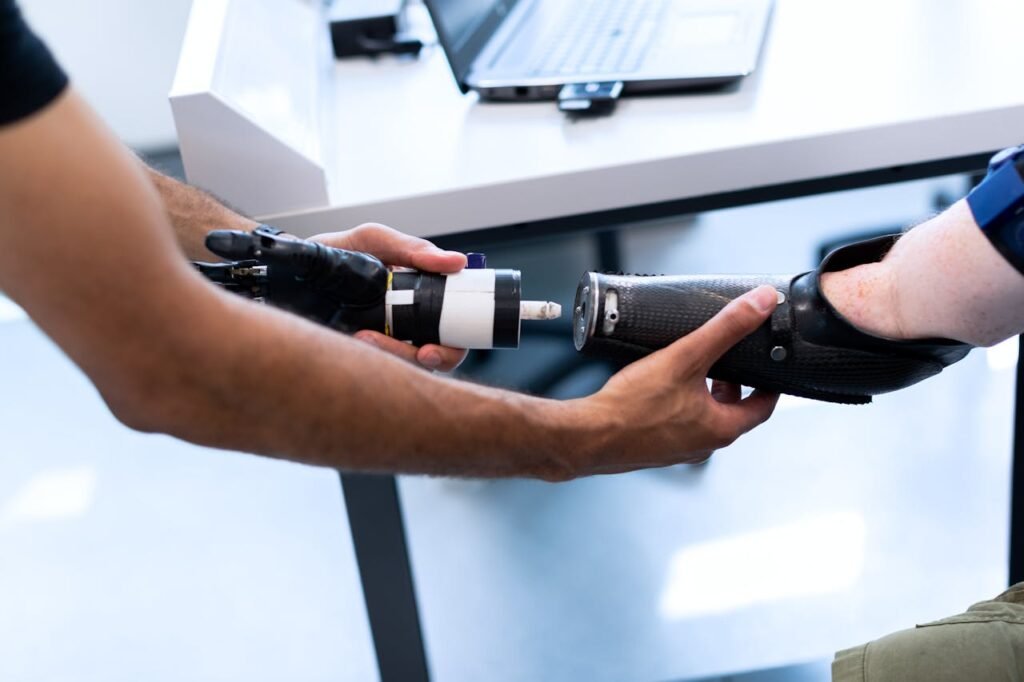
Some people think that if a prosthetic doesn’t have electronics, it doesn’t need much training. That’s not true.
Even simple mechanical prosthetics require practice. The hand, wrist, and forearm need to adjust. The brain needs to learn timing. The muscles need to get used to the new motions.
That’s where rehabilitation comes in.
Rehab is not just about exercise. It’s about relearning life. It teaches users how to do daily tasks with their new finger—opening doors, holding cutlery, typing, using a mobile phone, or tying shoelaces.
At Robobionics, we guide users through this journey. We work closely with rehab experts who understand the physical and emotional side of recovery. We even offer a gamified rehab app that turns practice into play.
This keeps users motivated and makes the learning process fun, not frustrating.
Step by Step Progress: Building Skill Gradually
Rehabilitation for partial finger prosthetics follows a simple but powerful principle: start slow, build steady.
In the beginning, users might only practice opening and closing the prosthetic. Then they try picking up light objects—like a sponge or a piece of paper. Slowly, they move to heavier, trickier items—like coins, keys, or utensils.
This gradual progress helps avoid injury. It also builds confidence. Each success—no matter how small—shows the user that their hand is becoming stronger, smarter, and more skilled.
Biomechanically, this process helps muscles grow stronger and more precise. It also encourages balance between the different fingers and joints of the hand.
That’s how we turn effort into ability.
Importance of Consistency
One of the biggest factors in rehab success is consistency. A few minutes of focused practice every day is far more powerful than one long session a week.
That’s because muscle learning and brain rewiring depend on repetition.
With each practice, the brain’s connection to the prosthetic gets stronger. The body finds smoother movement paths. The frustration goes down. The progress speeds up.
That’s why we always tell users—don’t stop. Even after you get used to your prosthetic, keep using it. The more you use it, the better it becomes.
Not just because the device is strong. But because you are.
Life After Recovery: Real Stories, Real Movements
What Long-Term Success Looks Like
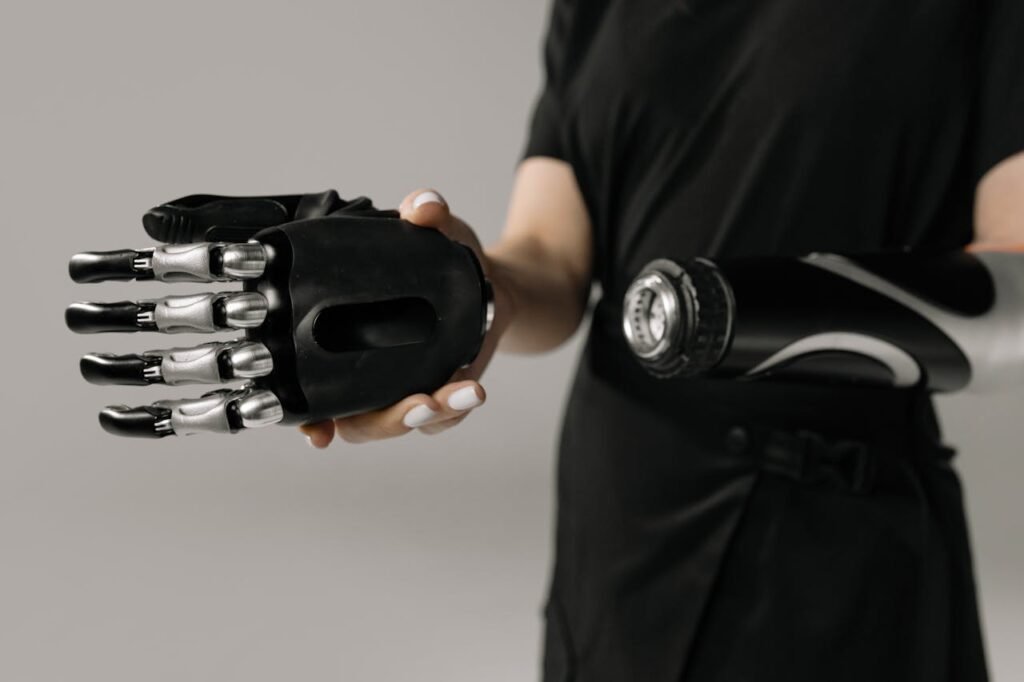
When someone first begins using a partial finger prosthetic, progress can feel slow. Simple tasks like buttoning a shirt or picking up a glass require effort. But with time, something beautiful happens—movements become easier. Tasks stop feeling like challenges. The prosthetic becomes part of everyday life.
Long-term success is not about having a perfect hand. It’s about having a hand you can trust.
For many users, this means returning to work, regaining independence, or doing something they thought they’d never do again—like cooking, cycling, or holding a pen.
These victories don’t come from one moment. They come from hundreds of small, steady wins. And they are powered by the incredible ability of the human body and mind to adapt, recover, and grow.
Real People, Real Results
At Robobionics, we’ve seen this transformation up close.
There’s the story of Arun, a tailor from Pune who lost two fingers in a machine accident. He was heartbroken. Threading a needle seemed impossible. But with the Grippy Mech Finger and steady training, he’s now back at work, sewing clothes with pride.
Or Reema, a college student in Uttar Pradesh who lost her fingertip in a fire. She struggled to write. Holding a pen made her hand ache. But with her new prosthetic, she’s not only writing again—she’s drawing, journaling, and planning to become a graphic designer.
Then there’s Shamsher, a farmer who lost part of his index finger while harvesting crops. He thought he’d have to give up his work. But today, he’s back in the field, gripping tools and carrying sacks with the help of a custom Grippy device.
These aren’t just stories. They’re proof that with the right support, people can rebuild their lives—one finger at a time.
The Robobionics Way: Affordable, Human-Centered Innovation
Built for India, Made for the World
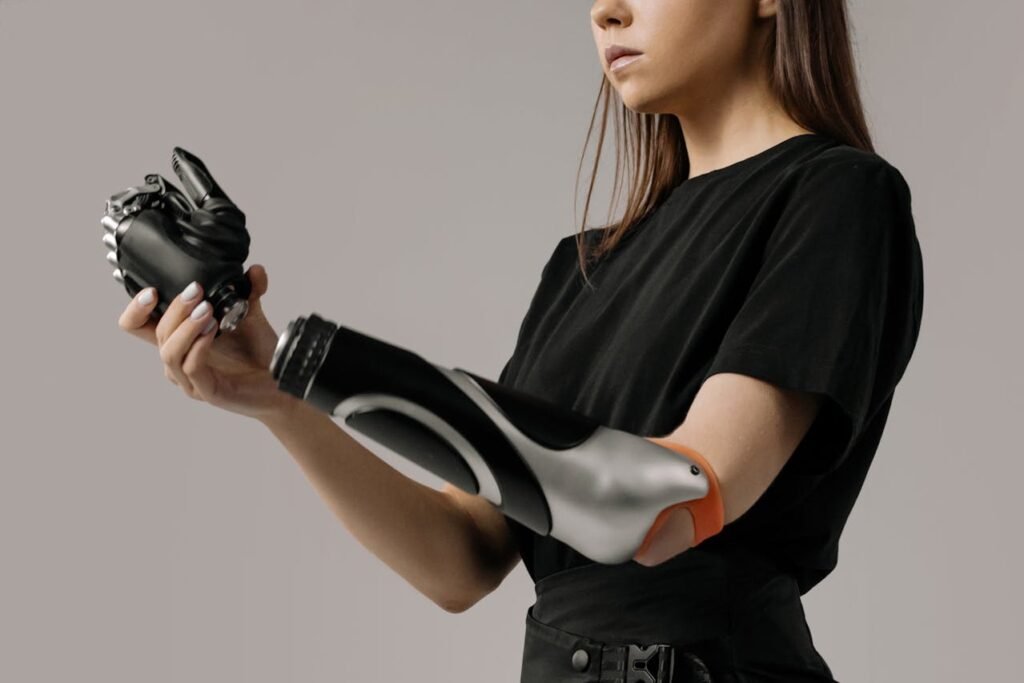
At Robobionics, we know that great technology is not about price tags. It’s about people. That’s why our mission has always been clear—create world-class prosthetics that are truly accessible.
We manufacture most of our components right here in India. We work with local clinics, engineers, therapists, and users to keep our solutions grounded in real life. Our team visits rural areas, urban centers, hospitals, and homes—listening, learning, and improving.
The Grippy Mech Finger is the result of that mission. It’s not just a device. It’s a response to real problems—sweat resistance, affordability, ease of use, and reliable grip.
Our focus is always on the user: how they live, what they need, and how we can help them get there.
Not Just a Hand, but a Partner
We don’t stop at delivery. We walk with every user on their journey—from the first fitting to the final rehab session.
We offer tele-rehab support, training materials, local partnerships, and easy service options. We treat every user with the dignity and care they deserve—not as a case, but as a partner.
We also keep pushing forward. We’re constantly testing new materials, exploring AI-based grip control, and improving feedback systems to bring even more life-like motion to our designs.
But no matter how advanced the technology becomes, our goal stays the same: to restore motion, confidence, and freedom.
Conclusion: Biomechanics Is Just the Beginning
Understanding how the finger works is not just for doctors or scientists. It’s for anyone who wants to know how recovery happens, how movement returns, and how people take back control of their lives after loss.
Biomechanics is not just about bones and muscles. It’s about people.
It’s about the quiet courage it takes to try again after injury. The patience to practice. The joy of holding something you love. The pride of doing something you weren’t sure was possible.
At Robobionics, we honor that journey. And we build tools that support it—thoughtfully, respectfully, and with deep belief in human potential.
If you or someone you love is looking for a prosthetic that feels like a part of you—not just a part you wear—know this: you are not alone.
Your journey matters. And we’re here to walk it with you.
Want to Take the First Step?
Book a free demo at www.robobionics.in/bookdemo and discover how the Grippy Mech Finger can bring motion, meaning, and hope back to your hand.
You deserve a future that moves with you. Let’s build it—together.



